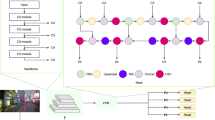Abstract
Automated parking management systems provide convenience and efficiency, and such systems are increasingly being deployed in modern urban areas. To facilitate the crucial function of vehicle counting in several applications, we developed a novel mechanism for counting vehicles based on stereoscopic computer vision with depth perception. In this study, we first established depth maps of pairs of images captured using stereo cameras through a scene flow-based approach. Next, we designed a modified sigmoid function to change the histogram distribution in the obtained depth maps by using the disparity threshold estimated from a disparity calibration board. Then, we proposed a vehicle counting mechanism using the modified disparity histogram; this mechanism can be used to easily determine the presence of a vehicle. Consequently, we applied the proposed vehicle detection and counting method to a surveillance camera and used it to determine whether vehicles were approaching an entrance; this camera captured a clear photograph of each license plate, which was then used for automatic recognition. The proposed system was evaluated using nine sets of video data recorded in an indoor parking garage and an outdoor parking lot. The experimental results quantified our method’s high performance and robustness in vehicle counting. For the indoor parking garage, the precision and recall were 99.56% and 98.29%, respectively. For the outdoor parking lot environment, the vehicle counting precision and recall were 98.85% and 98.85%, respectively. Our method was able to avoid counting errors when distinguishing between closely spaced adjacent vehicles.
















Similar content being viewed by others
References
Bouguet J (2004) Camera calibration toolbox for MATLAB, Example 5: Stereo rectification algorithm. http://www.vision.caltech.edu/bouguetj/calib_doc//htmls/example5.html
Bouguet JY (2001) Pyramidal implementation of the affine lucas kanade feature tracker description of the algorithm. Intel Corporation 5(1-10):4
Čech J, Sara R (2007) Efficient sampling of disparity space for fast and accurate matching. In: IEEE Conference on Computer Vision and Pattern Recognition, CVPR, pp 1–8. IEEE
Čech J, Sanchez-Riera J, Horaud R (2011) Scene flow estimation by growing correspondence seeds. In: IEEE conference on computer vision and pattern recognition CVPR, pp 3129–3136. IEEE
Chintalacheruvu N, Muthukumar V (2012) Video based vehicle detection and its application in intelligent transportation systems. J Transp Technol 2(04):305
Choudhury S, Chattopadhyay SP, Hazra TK (2017) Vehicle detection and counting using haar feature-based classifier. In: 2017 8th annual industrial automation and electromechanical engineering conference (IEMECON), pp 106–109
Dong H, Wang T, Yu X, Ren P (2018) Stereo matching via dual fusion. IEEE Signal Process Lett 25(5):615–619
Harris C, Stephens M (1988) A combined corner and edge detector. In: Alvey vision conference, vol 15, pp 10–5244. Manchester, UK
Hertz JA (2018) Introduction to the theory of neural computation. CRC Press
Hung CH, Xu L, Jia J (2013) Consistent binocular depth and scene flow with chained temporal profiles. Int J Comput Vis 102(1-3):271–292
Idris M, Leng Y, Tamil E, Noor N, Razak Z (2009) Park system: a review of smart parking system and its technology. Inf Technol J 8(2):101–113
Liu F, Philomin V (2009) Disparity estimation in stereo sequences using scene flow. In: BMVC, vol 1, p 2
Lucas BD, Kanade T, et al. (1981) An iterative image registration technique with an application to stereo vision. In: The 7th international joint conference on artificial intelligent, pp 674–679. Vancouver, BC, Canada
Marr D, Poggio T (1979) A computational theory of human stereo vision. Proc R Soc Lond B Biol Sci 204(1156):301–328
Meany S, Eskew E, Martinez-Castro R, Jang S (2017) Automated vehicle counting using image processing and machine learning. In: Proceedings of SPIE, vol 10170
Mimbela LEY, Klein LA (2000) Summary of vehicle detection and surveillance technologies used in intelligent transportation systems. Tech. rep., Federal Highway Administration s (FHWA) Intelligent Transportation Systems Joint Program Office
Moravec HP (1981) Rover visual obstacle avoidance. In: International joint conference on artificial intelligence, pp 785–790
OpenCV Library. https://opencv.org/
Rashidi A, Fathi H, Brilakis I (2011) Innovative stereo vision-based approach to generate dense depth map of transportation infrastructure. Transp Res Record: J Transp Res Board 2215:93–99
Song J, Song H, Wang W (2014) An accurate vehicle counting approach based on block background modeling and updating. In: Proceedings of international conference of image and signal processing (CISP), pp 16–21
Swathy M, Nirmala P, Geethu P (2017) Survey on vehicle detection and tracking techniques in video surveillance. International Journal of Computer Applications 160(7)
Tourani A, Shahbahrami A (2015) Vehicle counting method based on digital image processing algorithms. In: Proceedings of international conference pattern of recognition and image analysis (IPRIA), pp 1–6
Wen X, Shao L, Xue Y, Fang W (2015) A rapid learning algorithm for vehicle classification. Inform Sci 295:395–406
Xia Y, Shi X, Song G, Geng Q, Liu Y (2016) Towards improving quality of video-based vehicle counting method for traffic flow estimation. Signal Process 120:672–681
Yan Z, Xiang X (2016) Scene flow estimation: a survey. arXiv:1612.02590
Yuan Y, Zhao Y, Wang X (2013) Day and night vehicle detection and counting in complex environment. In: Proceedings of international conference of image and vision computing New Zealand (IVCNZ), pp 453–458
Zhan W, Ji X (2011) Algorithm research on moving vehicles detection. Proc Eng 15:5483–5487
Zhang Z (2000) A flexible new technique for camera calibration. IEEE Trans Pattern Anal Mach Intell 22(11):1330–1334
Zheng J, Wang Y, Zeng W (2015) CNN based vehicle counting with virtual coil in traffic surveillance video. In: Proceeding of international conferences of multimedia big data (BigMM), pp 280–281
Author information
Authors and Affiliations
Corresponding author
Additional information
Publisher’s Note
Springer Nature remains neutral with regard to jurisdictional claims in published maps and institutional affiliations.
This work was supported in part by the Ministry of Science and Technology, Taiwan, Grant 105-2622-E-305-001-CC3 and by the Orbit Technology Incorporation. The authors are also grateful to Mr. Yu-Chio Huang and Jerry Lee for their assistance in conducting additional experiments.
Rights and permissions
About this article
Cite this article
Lee, MR., Lin, DT. Vehicle counting based on a stereo vision depth maps for parking management. Multimed Tools Appl 78, 6827–6846 (2019). https://doi.org/10.1007/s11042-018-6394-6
Received:
Revised:
Accepted:
Published:
Issue Date:
DOI: https://doi.org/10.1007/s11042-018-6394-6




